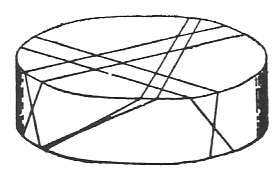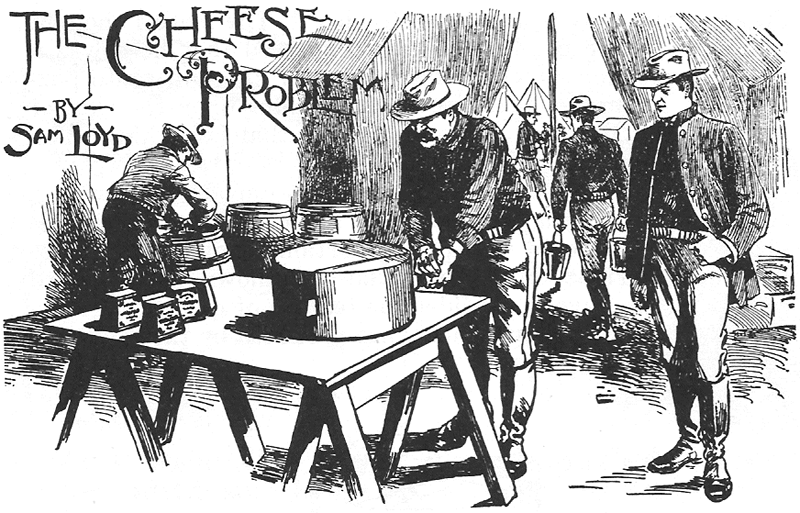The cheese problem

- 4287
- 1151
- Herbert Ritchie

If we ask ourselves where ideas for riddles come from, you will agree that a good topic can appear in any situation that surprises us by chance or seems ingenious. But the development and implementation of that scheme may need a lot of time and study.
In the day to day, something unique catches our attention and naturally the reflection arises, “if this already leaves me perplexed as is, without adding any difficulty, how could that difficulty increase giving the form of a true riddle where hide that ingenuity?
The problem can be presented sympathetic for the description to help explain the concepts and at the same time hide its true difficulty in what Breta would call a "childhood simplicity" in the story. That same simplicity can be used to divert the attention of the trick, or for, as an old philosopher said, "ars est Cele Artem" with what the true art is to hide the art. That is what the old riddles of the modern ones differ.
Well, being casually in a store, I saw an assistant cutting a cheese and I was fascinated by the ingenious way I had divided it. The more I gave him, the more convinced I was that he was indebted to that assistant because of that suggestion that would finally crystallize in the form of riddle. I congratulated the store manager for the ability of his assistant, to which he replied: “Ah! That's nothing. You should see it cut a cake!".
I never had the opportunity to witness his skill with the cakes, but it was as if a piece of cake and cheese cake stayed in the buche and upset my mental digestion from that moment, until one day they called me to invent A riddle. I drew a circle and called it the legend of the pension, and since then it has become very famous.
The cut of a piece of cake is related to the surface and does not go beyond the square root or the two dimensions. In the cheese cut we go further, we penetrate the surface and enter cubic equations, depth makes it three -dimensional.
Would you know how many pieces come out of these six cuts?

Solution
The cheese is divided into two parts with first cut, in 4 with the second, 8 with the third, 15 with the fourth, 26 with the fifth, and 42 with the sixth and last cut.

